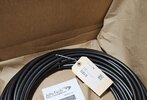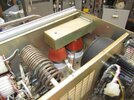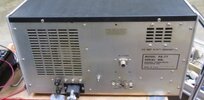Seems to me I did that back in the 80's way before I became an Extra.
Now that you're a Ham .......... it should be piece of cake for you.
 Proceed at your own risk>>>>>>>>
Proceed at your own risk>>>>>>>>
The only thing that the case has is either a dimple or pin to align the black adapter, and a screw to hold the black adapter in place.
Make sure that you know (before hand) where you want things to be. Study the 90º case halves for the locations of where the pin and screw hole are ............. and where you want them to be ........... alignment must be exact.
The detent pin:
The locating pin needs to be removed from the case, (If it's dimple use a pointed punch) from inside the case to flatten it out.
If you study a regular straight mic plug, the locating pin may have been added by using a centering punch or pointed punch with a hammer that puts a dimple on the plug adapter inside.
To keep from mangling the case half with the detent, you may have to back up the 90º case with a wooden dowel before adding the new locating dimple. (Or just drill another hole with another screw to make sure things are secure, I can say this because I save old mic plug parts.)
The screw hole:
Then drill the proper size hole where the set screw will hold the black plug in the clocked position needed.
Should be easy since the case splits in two, and I'm sure that others have done this to make it work for them too.
73




